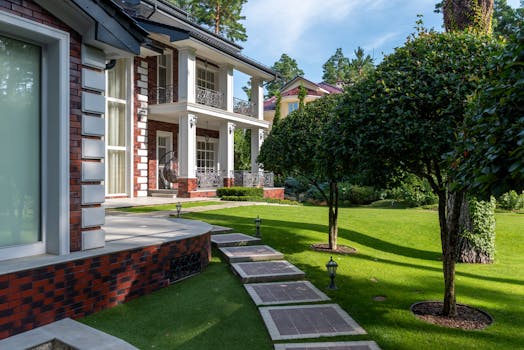How Green Roofs Impact Energy Bills: Cost-Effective Solutions for Urban Dwellers Seeking Eco-Friendly Living
Additionally, for those interested in maintaining their green roofs, understanding green roof maintenance tips can ensure that these systems remain effective and beneficial for years to come. Stormwater runoff is a big problem in cities. When it rains, water flows over concrete and asphalt, leading to flooding. However, eco-friendly green roofs can help! They absorb rainwater, which reduces the amount of runoff. This is great for keeping your neighborhood dry (and your shoes clean!).
On average, green roofs can reduce runoff by 50-90%. This means less water in the streets and more water soaking into the ground. The plants and soil on a green roof act like a sponge, soaking up rainwater and slowly releasing it back into the environment. Implementing energy conservation techniques not only helps with flooding but also reduces the pressure on drainage systems. When drainage systems are overloaded, they can lead to pollution in local waterways. By installing a green roof, you contribute to stormwater management and help keep your environment cleaner.

Actionable Tips for Implementing Your Eco-Friendly Green Roof
Key Takeaway: Planning and installing a green roof is easier than you think!
Here are some simple steps to get started with your green roof:
Assess Your Space: Check if your roof can support the weight of a green roof. Most roofs can handle it, but it’s best to confirm.
Choose Your Plants: Pick plants that are suitable for your climate. Native plants are a great choice since they require less water and care.
Gather Your Materials: You will need soil, plants, and possibly a waterproofing membrane if you’re building a more permanent structure.
Start Small: If you’re new to gardening, begin with a few pots or a small section of your roof. Gradually expand as you gain confidence.
Get Help: Don’t hesitate to seek advice from local gardening groups or professionals. They can provide valuable insights and resources.
By following these steps, you can create a green roof that helps lower your energy bills, improves air quality, and supports local wildlife. Plus, it adds beauty to your home!
Urban dwellers can truly benefit from green roofs. They provide a cost-effective way to create sustainable living spaces. Not only do they save money on energy bills, but they also contribute to a healthier environment. If you’re interested in making a positive impact, consider exploring green roof options for your home.
With the right approach, anyone can enjoy the benefits of green roofs, regardless of their living situation. Now is the perfect time to embrace this eco-friendly solution!
FAQs
Q: How do green roofs contribute to lowering my energy bills, and are there specific types of green roofs that are more cost-effective for small homes?
A: Green roofs help lower energy bills by providing insulation that reduces heat loss in winter and retains cool air in summer, which can significantly decrease heating and air conditioning costs. For small homes, extensive green roofs are often more cost-effective due to their lower maintenance requirements and lighter weight, making them easier to install and manage.
Q: In what ways do green roofs enhance urban air quality, and how does this improvement intersect with their energy efficiency benefits?
A: Green roofs enhance urban air quality by filtering airborne particles and pollutants through their vegetation, which helps oxygenate the surrounding area. This improvement in air quality intersects with energy efficiency benefits as the green roofs insulate buildings, reducing heating and cooling needs, ultimately lowering energy consumption and contributing to a decreased carbon footprint.
Q: Can you share some real-life case studies that highlight the energy savings achieved with green roofs, particularly for residential properties?
A: Green roofs have been shown to significantly reduce energy costs for residential properties by insulating against heat loss in winter and retaining cool air in summer, which can lower heating and air conditioning bills. For example, studies indicate that green roofs can reduce runoff by up to 70%, and they can double or triple the lifespan of waterproofing membranes beneath them, demonstrating both cost-effectiveness and environmental benefits.
Q: How does stormwater management offered by green roofs play a role in reducing energy costs, and what additional benefits can I expect in terms of wildlife and urban living?
A: Green roofs manage stormwater by filtering rainwater and reducing runoff by up to 70%, which alleviates pressure on drainage systems and minimizes flooding. This capability, combined with improved insulation, helps reduce energy costs for heating and cooling, while also providing habitats for wildlife, enhancing biodiversity, and creating a more pleasant urban environment.
